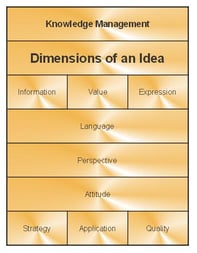Published on
Providing Adults Free Courses Online: It Can Be Done (Part 1)

Adult learners are looking for a quick and affordable education to get them back into the workforce. The San Diego Community College District has found a way to make education not only accessible but also affordable for all adults in the state of California. In this two-part interview, Carlos Cortez discusses what makes a great online infrastructure, how the California Community District is providing free courses, and higher ed’s responsibility to delivering a high-quality learner experience.
The EvoLLLution (Evo): What are the characteristics of a well-designed online ed infrastructure?
Carlos Cortez (CC): Speaking parochially, typically here in our California community college system, when an individual references distance education, they usually are referring to Canvas or Blackboard. When an educator in our system references online instruction, they are typically referring to the LMS, or Learning Management System. I want to challenge that in continuing education. We are attempting to construct a virtual online ecosystem wherein learning, teaching collaboration and student success are concurrently emphasized.
One of the essential elements, particularly for non-traditional students, is the need for human interaction. I lead the largest non-credit institution in the state of California, serving over 40,000 students each year, and none of our students pay to enroll in our courses.
If the experience isn’t dynamic for the student, they won’t come back next year. In my past experience working in K-12, two-year, four-year and graduate education institutions, students have been required to be in class to obtain a certificate or credential. They did not want their parents finding out that they had been penalized for not going to class. Community college students may not like certain courses they take, but they were directed to take those classes because someone else was paying for it. Regardless of how much a student enjoyed their experience, they want to get their money’s worth. In our case, everything is free of charge.
Evo: What impact do free classes have on the student experience?
CC: It’s a very special place in that no student is required to be there. We don’t have your typical disciplinary problems. There isn’t the drama that can exist in other educational institutions because everyone is there to learn. There will be a teacher in the brick-and-mortar ecosystem, which is a rewarding experience because your students are hungry for knowledge. They are excited and interested. Therefore, when we work with non-traditional students who haven’t successfully completed school in the past, our secret recipe to their success is the relationship between teacher and student. The relationship between students is so important in that brick-and-mortar ecosystem.
This fall, we launched ICOM Academy, the interactive competency-based online micro-credentialing academy. Our goal first and foremost was to recreate an environment that facilitates dynamic relationships. Therefore, live face-to-face sessions is an essential element when working with non-traditional students. Almost anyone else in this landscape has a primary focus on flexibility. What it ultimately becomes is a sink-or-swim mentality wherein students are allowed to complete assignments at their own time, at their own speed, and often without much direction or guidance. The challenge is that if students had the wherewithal to do so, they would not be considered non-traditional students, and they would have thrived the traditional education environment.
The first charge we had was to require synchronous face-to-face sessions. The second was to require students to meet outside of class in live and synchronous face-to face sessions. This created engagement in collaborative activities and assignments outside of class to recreate that robust human- to-human interaction. The third and most important charge was to not only bring every single brick- and-mortar student service online but to go one step further and provide additional services that we are unable to physically provide in our college. For example, my institution does not provide any tutoring or library services on campus, but ICOM Academy is going to have 24-hour tutoring for over 100 subjects, a 24-hour call center, and 24-hour access to a live librarian. We will also have an online library. Many of the things we are building are familiar—everything from turnitin.com to Proctorio to Cranium café. We are utilizing every bell and whistle you can imagine. Over 50 apps, tools and resources are being built into a virtual online ecosystem to ensure that students are supported holistically.
Evo: Do free classes mean zero cost for the entire course, or are there textbook fees?
CC: Open educational resources or zero-cost-to-complete degrees are key philosophical underpinnings of this endeavor. Every program not only requires no tuition but there are also no additional course material fees. Faculty have worked to get rid of the textbook and move to open educational resources. We received multiple grants to support faculty with flexibility and multiple points of entry into a program. With ongoing admissions, students are able to begin and exit when it’s convenient for them.
All of our certificates are stackable. For example, in the automotive, welding and healthcare career pathways, there are about seven certificates that usually consist of two or three courses each. By creating stackable programs, a student can, for example, complete their auto certificate, get a job as an auto technician and come back to upskill so they can advance in their career. Programs are also shorter. Instead of being 2,000 hours long, they tend to be a couple of hundred.
Evo: How affordable are these programs, especially for adult learners?
CC: We are a part of the California Community College System, so we collect apportionment. In California, all adult education is free. We offer over 75 career training certificates–everything from coding and cyber security, to HVAC and plumbing, nursing, culinary arts, welding, fashion, and child development. All of these programs are free of charge.
In some cases, students are dealing with serious mental health issues or substance abuse and are unable to work because they are shackled with personal demons. There are people who were contributing members of society who have now been displaced. We need to find a way to quickly retool them to move them back into the workforce. The reality is that non-credit students in the California Community College System represent only about 7% of our total full-time equivalent students. Of them, less than half are in career education. About 3% of our total allocation is going to short-term intensive vocational training. I couldn’t imagine a bigger need. I urge the state system to ask our state government for additional apportionment for short-term noncredit career education, and then to set that apportionment aside and incentivize districts to begin programming in this area. Most of the 75 programs we offer as noncredit, short-term, intensive career education do not exist in any other district in the state. Very few other districts offer rigorous non-credit career education, and when they do, it tends to be in the form of less rigorous, less high-skilled career pathways that lead to minimum wage jobs.
Evo: What areas would you like to see more focus on?
CC: I have been adamant about the need to move away from offering education that leads to jobs that pay lower wages and move toward offering programs that lead to jobs that pay robust wages. For example, medical coding is a very common certificate offered. We used to offer it in a high school setting. When you exit a medical coding program, you make $15 an hour. We abandoned that pathway and instead created a medical unit worker—one of ICOM Academy’s program offerings. A medical unit worker is the individual who triages you when you walk into an emergency room, the person behind the glass who gets to decide how quickly you get to see a doctor. One of the skillsets this worker needs is medical coding, but these jobs tend to be unionized and pay between $50,000 and $70,000 a year.
I would rather invest in a short-term pathway to get someone into one of those jobs than for them to be in an insurance company’s back office. We have been very deliberate about pathways that lead to livable wages, particularly in engaging industry to develop career education programs, which is our online enterprise’s focus. Each of our career education programs has an industry advisory board comprised of business owners and industry representatives who inform curriculum development, help our students find jobs, and inform and reform our approach to teaching that discipline.
Lastly, there is the importance of non-profit status and education. There is no financial drive that supports what we are doing. There are times when for-profit educational initiatives actually help move the needle forward, but by and large, when we aretalking about serving immigrants, refugees, and America’s underserved adult learners, education should be free and public. A number of elements are there: face-to-face classrooms, live synchronous class time, rigorous curriculum, the importance of collaboration (both within and outside the classroom between students), open educational resources, stack-ability, flexibility, free tuition, and engaging industry in the non-profit educational institution are the core components behind ICOM Academy’s success.
Evo: Is funding for all of these programs fully provided by the state to anyone offering relevant career training programming?
CC: It is for anyone in the community college system. There are 116 community colleges and 73 community college districts. All of them have the ability to offer free adult education and training, and the state will pay for the apportionment and match the same apportionment that we receive for credit students. To be clear, students really do not pay for community college in California. They pay pennies on the dollar of what the expense actually entails.
Evo: How common is this model?
CC: There is no one in California doing what we are doing. I’m not just referring to ICOM Academy–there is no other district offering impressive non-credit career education pathways that they have built. There is valid reasoning for that because in 1980, the state created a two-tiered funding system, and in 2015, after many changes, that decision was reversed. Now, we actually receive more money for non-credit students than we do for credit students. That should be a big incentive to expand non-credit offerings, but for a lot of mostly contractual reasons, there continues to be huge pushback preventing us from doing so.
Evo: Do you think there’s a responsibility that higher ed institutions have to ensure that the learner experience is of a high quality both inside and outside the learning environment? Or is it up to the student to persist through the experience they happen to be given?
CC: The disconnect unfortunately divides public and private approaches to the delivery of educational services. For example, when I first became an administrator, I was asked where I wanted my parking space sign for the school principal parking space. I was told about many spaces in front of the building because employee parking is divided from the student parking, which isat the back of the lot. Typically, most business models I’m familiar with prioritize the customer first. Yet, most public educational institutions ask employees to park closer to the building than students. I said that I would be willing to take a parking space in the back.
We need to reverse the client in this–and that is really the big disconnect. Private colleges, especially those for profit, have recognized that students are clients, and their programming and operations are designed to be student-centered. The education sector requires us to ensure that the learner experience in both the academic and administrative environments are dynamic, positive, beneficial, and exhaustive. This principle of instructional design and services centered on the student was born out of special education theory in the 1970s. General education practitioners philosophically embraced it in the 90s.
Evo: How did the ICOM Academy apply this to their own creation?
CC: A student is not a blank slate. The holistic approach to teaching and learning is dwindling away. Yet, the infrastructure, particularly at public institutions, continues to dismiss the idea that educational institutions are businesses. But they must operate with the premise that students are customers, and therefore, should be treated with respect. So, yes, it is absolutely incumbent upon us to design the ICOM Academy, to set ourselves apart from what is being done in distance education, and to be certain it is the user who is the center of this work.
We started with student focus groups. Then, we brought in a third party to help faculty see the development of their curricular coursework from the user’s perspective. In many cases, it was something as simple as structuring each course shell with the same components and in the same format. This way, when students begin a program, regardless of which faculty they are taking a class with, they will always know where to find a syllabus, calendar, announcements and discussion board activities. Bringing in a third-party learner who creates professional content has been really important. We are working with Ease Learning, and it is costing us between $50,000 and $100,000 to produce each course in ICOM Academy. This is because theyhave deployed videographers, graphic designers, copy editors and content specialists who are helping our faculty take their content and develop it into a professional experience. Again, taking the user experience to heart and using that to drive how we develop programming has been critical to how we are launching ICOM Academy. And frankly, it is antithetical to how most public educational institutions engage in distance education offerings.
Evo: How do you combat some of the accusations that are so commonly leveled on continuing ed and non-credit programs?
CC: When I ran UCLA education extension, I operated in different types of continuing education enterprises. That said, the course certificate approval processes for non-credit is identical to that of credit, no less onerous or rigorous. In fact, the non-credit process is actually more onerous. It takes longer because of internal dynamics, but on paper, there is no difference.
My first charge when I became president of San Diego Continuing Education was to author the only history of non-credit education in the state of California. What I learned was that up to 1980, the state funded non-credit and credit equally. In 1980, a distinction was made to start funding non-credit at a lower amount. Now, it is disincentivized. The state also changed the requirements for teaching non-credit, such that faculty are required to teach 25 hours per week and credit faculty are in the classroom only 15 hours per week. So, credit faculty have very little incentive to move their programs to non-credit because it would mean having to teach more for the same pay.
And taking your credit courses and calling them non-credit stigmatizes them. That process of stigmatization or creating a tiered educational system is the narrative in my history. It was the driver to creating this tiered structure whereby non-credit is less than.
This interview was edited for length and clarity.


